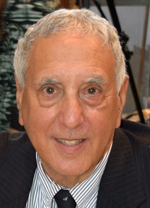By Donald H. Harrison

SAN DIEGO – Jews of the Wild West, which ran Wednesday night on KPBS2, was a video quilt with each patch telling the story of 19th or early 20th century Jews who made an indelible contribution to their times.
Produced and directed by Amanda Kinsey, who is not Jewish, the documentary had one major flaw: It lacked an on-screen narrator to guide us from one segment to another, or failing that, a map of the western United States that could have been exhibited before each segment to show us where we would be taken next.
On the other hand, the stories told by descendants of the pioneers and by historians were first rate. Viewers learn about Bronco Billy Anderson, the first movie cowboy hero, whose real name was Maxwell Henry Aronson. He appeared in 300 western films.
Then the documentary moved to a real Old West lawman, Wyatt Earp, who met and married Sarah Marcus, an actress from a Jewish family that had migrated from Prussia to New York City to San Francisco. Earp fought in the legendary 1881 battle at Okay Corral in Tombstone, Arizona, married Marcus, and was seen on occasion wearing a kippah at Jewish ceremonies. He ended up being buried besides her in the Jewish cemetery in Colma, California.
Next up was the story of Levi Strauss, who moved from Bavaria to New York City to San Francisco, where he arrived in 1853, and opened a dry goods store. In 1868, he teamed up with Jacob Davis of Reno, Nevada, who had invented tailor-made pants out of white duck with rivets on the corners of the front pockets to prevent ripping. The result was the popularization of Levi’s jeans.
Onward the documentary went to Leadville, Colorado, where Jewish merchants served the mining town. Among the businessmen there was David May, who was the progenitor of the May Company department stores, and Meyer Guggenheim, who had seven sons and established the American Smelting and Refining Company. The famous Guggenheim Museum in New York City is named for family members.
Back to the San Francisco Bay area, where viewers learn about Ray Frank, who in 1890 became the first Jewish woman to preach a sermon. She did it from the pulpit of Temple Sinai in Oakland. Her sermon focused on how important it is for Jews to get together. The current rabbi of that congregation, Rabbi Jacqueline Mates-Muchin, told of drawing inspiration from Frank because she is another “first.” One of her parents is Chinese-American, the other was an Ashkenazi Jew.
The documentary jumped back in time to the 1853 exploration of the west led by pathfinder John C. Fremont, who was accompanied by photographer and painter Solomon Nunes Carvalho, a Sephardic Jew, who documented the trip with daguerreotypes of Native Americans whom they encountered along the way, landscapes, and expedition members themselves. It was reported that when the expedition reached Salt Lake City, which had been established only two years before, Carvalho was personally greeted by Mormon leader Brigham Young, who had a great interest in meeting Jews.
Next, the documentary took us to the Acoma Pueblo, New Mexico, home of the Acoma people, who took a shine to the Jewish merchant Solomon Bibo, who represented their interests in dealings with the federal government and who married Juana Valle, a granddaughter of a former Acoma governor. Eventually, Bilbo himself became a governor, equivalent of a chief, of the Acoma tribe.
Although Golda Meir’s family had moved her from the Ukraine to Milwaukee, Wisconsin, she later moved to Denver, Colorado, where an older sister was hospitalized at one of that city’s well-known hospitals for the treatment of tuberculosis. While in Denver, she attended North High School, started a committee to purchase textbooks for children of impoverished families, and met her husband, Morris Meyerson. They eventually moved to British Mandatory Palestine, where she later became a prime minister of Israel.
The documentary continued with segments about Jews who went into the cattle business in Colorado and efforts by the financier Jacob Schiff to encourage East European Jews to immigrate to the West through the Ports of Galveston and New Orleans, and to live in agricultural settlements such as one at Cottopax, Colorado, which lasted from 1882 to 1884.
In El Paso, Texas, Abraham Zlabovsky sold meat and also produced matzos, and was a friend to the campesenos who crossed the border from Juarez, Mexico, to do agricultural work in the United States. In Elbart, Colorado, Isaac and Rachel Schwayder had a little luggage company that through the generations grew into the Samsonite brand, so named because like the biblical Samson, these suitcases were very strong.
The documentary thus is one mainly focusing on Jewish accomplishments and achievements in the Old West, but it also examines briefly antisemitism that arose from time to time, especially from members of the Ku Klux Klan.
I recommend this documentary to anyone who enjoys history and biography, or who needs to be disabused of the notion that most American Jewish history occurred on the East Coast. It may be accessed via Amazon.
*
Donald H. Harrison is editor emeritus of San Diego Jewish World. He may be contacted via donald.harrison@sdjewishworld.com